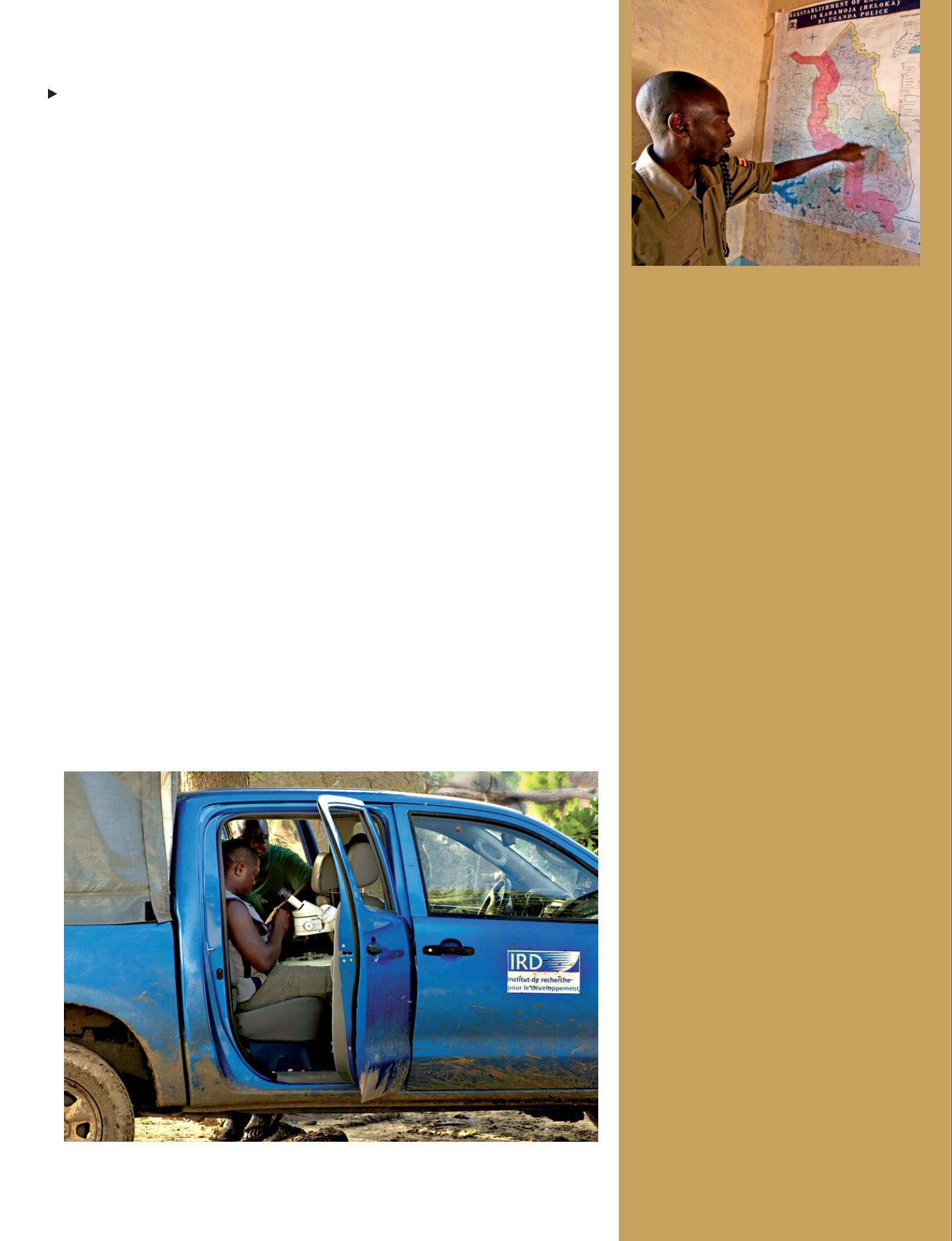
Traditional
practices
Cultural practices, traditional knowledge
and technologies are used to cope with
risks. During floods, people construct
structures with sandbags and stone or
move to higher ground to avoid damage.
When confronted with drought or locusts
they turn to their crop reserves or sell
their livestock. That is why pastoralists
keep huge livestock numbers.
Whenever calamities occur, people
get together and pray in churches and
mosques. Some go to witchcraft and
slaughter an animal as sacrifices. Whether
it works or not, it is part of the culture.
African society is evolving but you cannot
get rid of such cultures overnight.
Globally, the percentage of young people
is increasing. Very often, they are without
employment. And, due to social change,
the authority of the elders is destroyed.
Moreover, in remote areas, certain
communities, mainly pastoralists, feel
totally marginalised from the national
economy. For example, before, cattle
rustling was used by pastoralist tribes
when you wanted a wife from another tribe,
to show you were strong. You needed the
agreement of the elders, otherwise you
were thrownout of thecommunity. But cattle
rustling has become an organized business:
this year around 30000 cattle were stolen in
Eastern Africa region.
More positively, wild animal protection
has improved. Killing an elephant or a lion
used to be a sign of strength, dignity and
bravery. Look at my earring: it belonged
to my father and showed that he was
very brave because he killed a lion. There
were plenty at that time. But our wildlife
resources have decreased dramatically
and we now conserve our lions and
elephants and monitor their movements
and numbers with satellites.
c
D.B.
94 - Sustainable Development in Africa & Satellites
94
to find the right balance between
environment protection and boosting
the economy.
Concerning the use of satellite data, we
need a policy framework and strategy
at the continental level and countries
must develop national strategies, adapt
the continental strategy to regional
specificities.
One of the areas where disaster risk
institutions fail is access to data /
information. When it is available
and used properly, it can ameliorate
their capacity. So improving access
to data/information is a challenge. In
some cases, it is available freely, like
Meteosat data which is given to Africa.
However, it is of low resolution and to
complement it you have to buy high
resolution which is still very expensive.
Nevertheless, with what we have, we
can already do a lot. Implementation at
the country level, i.e. in the environment
and agricultural sectors, is difficult.
This is as a result of lack of access to
satellite data / information as satellite
data ground receiving stations are
located in the Meteorological Services,
which are not networked with other
institutions.
More trained experts needed
Linkage between institutions is
deficient. The question is ‘who should
use the data / information?’ For
instance, the national level might
sometimes have capacity but when it
comes to district level it is different. We
have to network and enhance capacity at
that level by training. We have trained a
number of experts with PUMA, and now
there is training with AMESD, but there
are not enough trained experts. This
is partly because, when trained, they
leave for better opportunities. Staff
turnover is high and affects the project
or sector. The solution is to train more
experts. Financing is also a limitation.
Whatever we have is not implemented
as desired due to the lack of resources
and capacity.
Disasters seriously affect development.
We have to keep reserve funds for
emergency situations and relief
activities. Rather than financing
Sustainable Development alone, we
need to support efforts that would
reduce disaster risks and their
consequences. For instance, we lack
funds for buying equipment and if we
get some through foreign support it
simply becomes obsolete after the
project expires. It is a very vicious circle.
But if we are dedicated to achieving
Sustainable Development goals as
well as participating in international
environment monitoring systems,
particularly those based on satellite
technologies, we need to maintain the
infrastructure put in place with the help
of foreign support, such as AMESD.
c
Dr Debalkew Berhe
IGAD (Intergovernmental
Authority on Development)
Djibouti, Republic of Djibouti
i
Dissection of Anopheles mosquitoes in the village of Maga in northern Cameroon using a portable
binocular microscope.
© Carlo Costantini/Indigo/IRD
i
A police commander explains the action of the Anti
Stock Theft Unit (ASTU) and of the police in Karamoja,
Uganda. © Khristopher Carlson/IRIN


